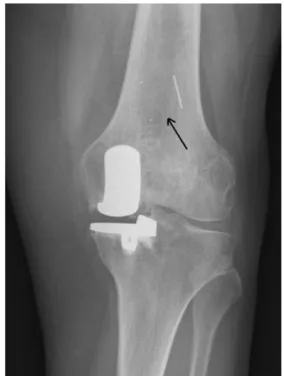Oxford phase 3 unicondylar knee arthroplasty through a minimally invasive approach: long term results
Texto completo
Figure


Documento similar
Objective: To study the clinical and radiological outcomes of patients with extra-articular phalangeal and metacarpal fractures who were treated with minimally invasive
The purpose of this study was to calculate prevalence of coronal malalignment in cementless, fully coated with hydroxialapatyte (HA) femoral stems focusing in their long- term
The results of hallux valgus X-ray correction by Chev- ron osteotomy using minimally invasive techniques con- firm that this is a safe and effective procedure for the
Conclusions: We recommend using posterior-stabilized plus implants in deformities <20°, with sufficient collateral li- gaments and no bone defects; constrained prosthesis in
The scarf-like procedure has been effective with good to excellent results in the AOFAS (American Orthopaedic Foot and Ankle Society) scale; however, there are reports on
Key words: Knee hinged prosthesis; bilateral knee deformity; posterior prosthetic dislocation; implant rupture; hinged prosthesis failure; uncoupling; revision in knee
Minimally invasive percutaneous plate osteosynthesis (MIPPO) technique applied in the treatment of humeral shaft distal fractures through a lateral approach.. Minimal invasive
Study inclusion criteria were: patients with advanced knee Osteoarthritis, associated or not with nonunion, who had undergone TKA, with a history of knee fracture (distal femoral